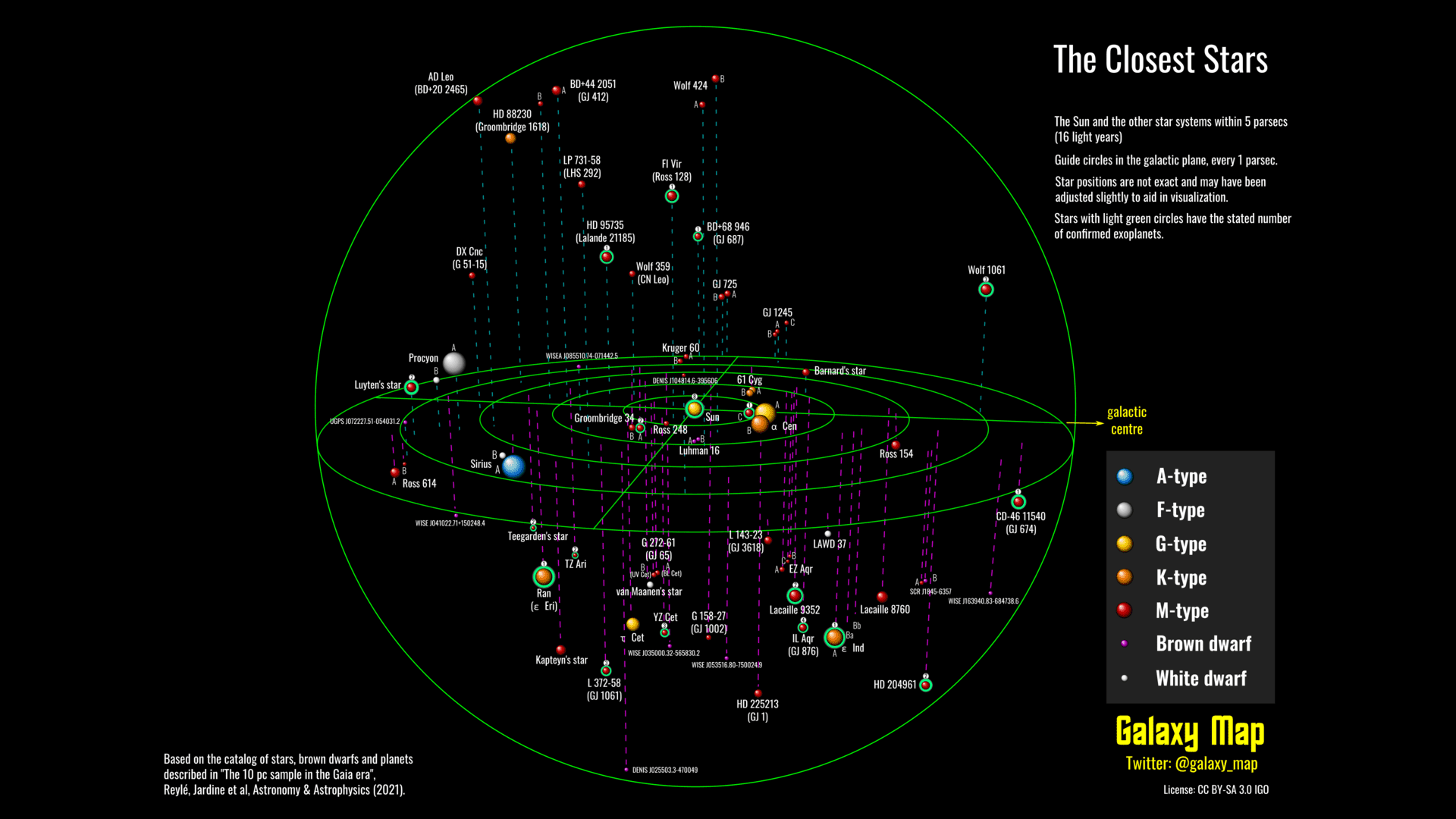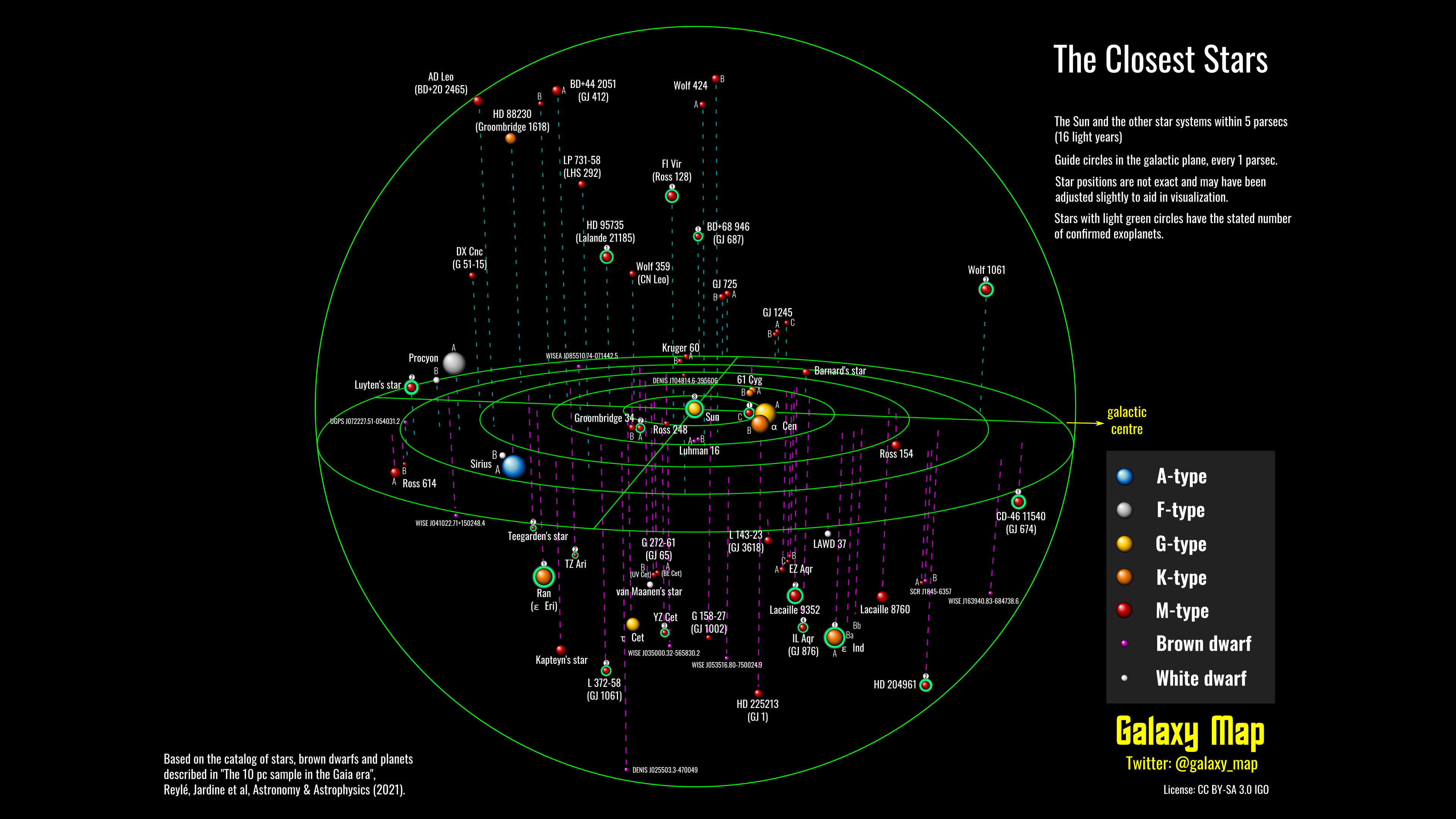A team of European astronomers has published a new catalog of celestial bodies located within 10 parsecs (32.6 light years) of the Sun. It was compiled from data collected by the Gaia telescope. Its measurements have significantly refined the coordinates, direction of motion and spectral class of many stars and brown dwarfs.

Map of celestial bodies in the vicinity of our solar system. Source: Galaxy Map
A total of 541 objects are included in the catalog, comprising 464 systems. Of these, 317 are main-sequence stars. Their spectral class distribution is as follows:
- 4 stars of spectral class A;
- 8 stars of class F;
- 18 stars of class G (the same class as our Sun belongs to);
- 38 – class K (orange dwarfs);
- 249 class M (red dwarfs).
As for the remaining bodies, 20 are white dwarfs, 86 are brown dwarfs and 77 are confirmed exoplanets. Astronomers have not yet been able to determine the spectra of 41 objects in the catalog. They are all part of multiple systems. Presumably, 36 of them are stars of spectral class M, 4 are brown dwarfs, and 1 is a white dwarf. Given this information, approximately 80% of the luminaries in the Sun’s neighborhood are red dwarfs.
As for the distribution of stars and brown dwarfs by system, the statistics are as follows:
- 245 systems consist of one component;
- 70 have two;
- 19 of three;
- three of four;
- 2 – of five components.





